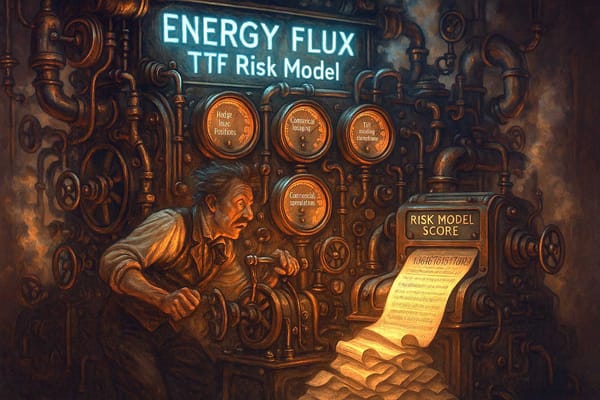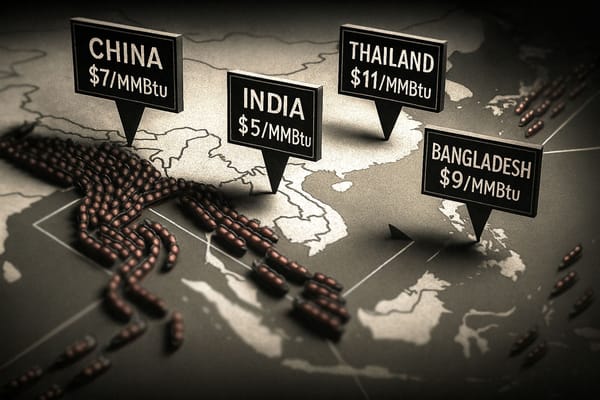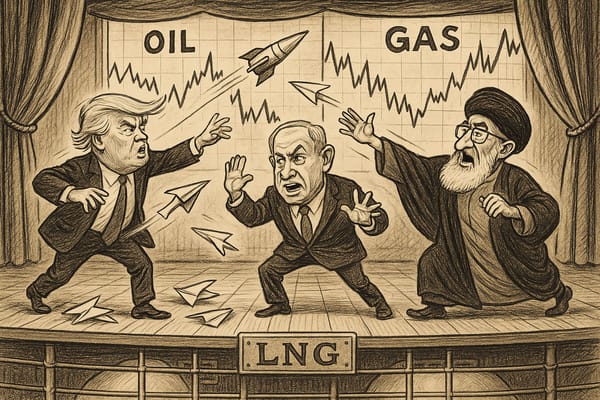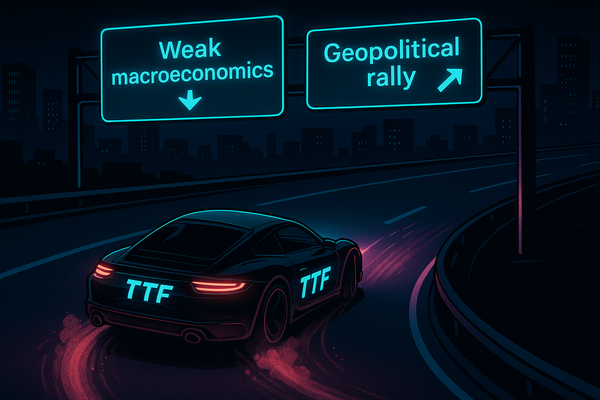Fear grips EU gas trade
‘War premium’ makes LNG obscenely profitable – and too expensive to burn

Member discussion: Fear grips EU gas trade
The Flux Exchange discussion forum is for paying members only. Subscribe to read and reply.

New and improved modelling cuts through the noise to give a clearer view of shifts in risk pricing

DEEP DIVE: How low must LNG prices go to unlock Asian demand?

TTF bull trap turns investment funds into bag holders | EU LNG Chart Deck: 26 June 2025

TTF turns on a dime, but is risk being priced properly? | EU LNG Chart Deck: 20 June 2025